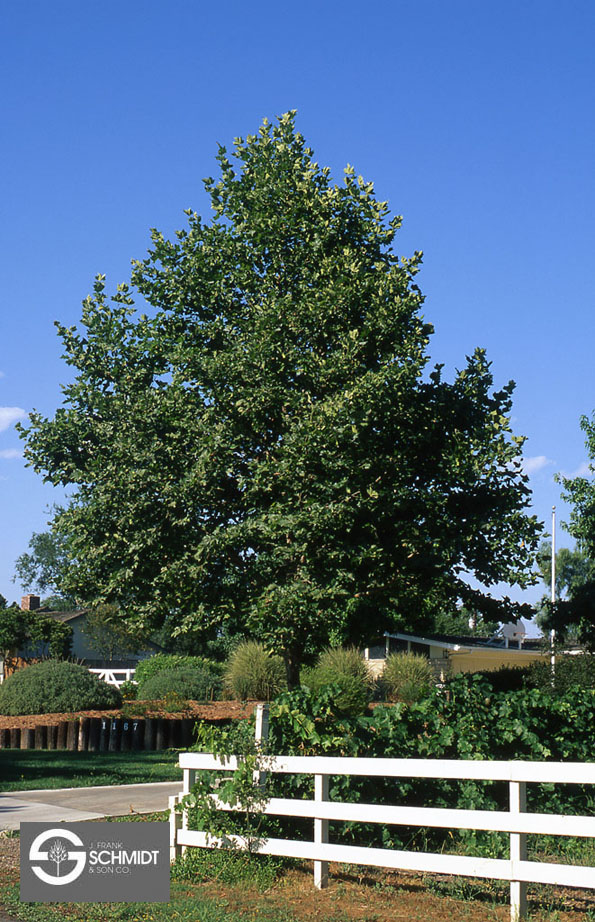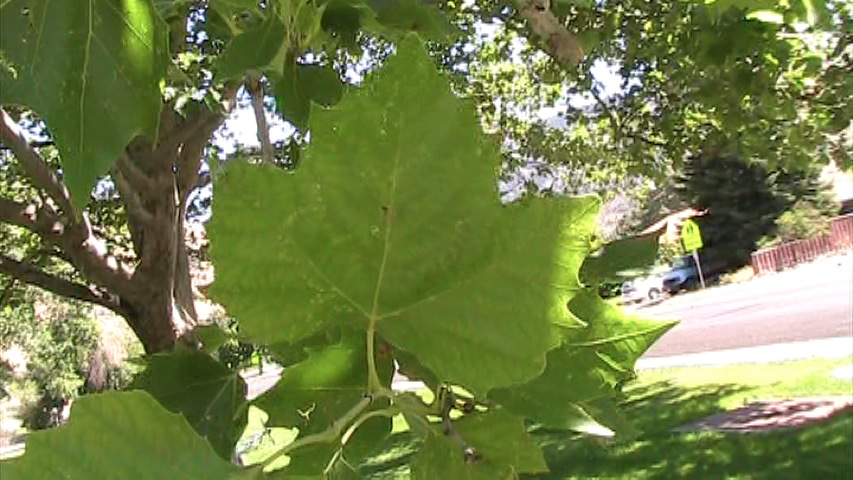| PSC 2620: Woody Trees and Shrub | Course Home | Week 6 |
Platanus x acerifolia - London Planetree
Plant Viewer
 |
 |
| London Planetree is a large and spreading tree that can reach upwards of a 100 feet high and 80 feet wide. | The most striking feature of the Planetree is its exfoliating bark, which adds ornamental interest to the tree year-round. |
 |
 |
| The large leaf is a glossy green and has 3-5 lobes, similar to those found on a maple. | Spiky seed balls form on the tree during summer and they turn brown and harden in the fall. |
Plant Description
Platanus x acerifolia, or London Planetree, is a large, stately and beautiful tree. It can reach 70-100 feet high with a spread of 65-80 feet, though the largest ones I have seen in the valley are probably only 50 feet, and tend to be more spreading in form. It has a moderate to fast growth rate. The large branches create an open form under the canopy that highlights the exfoliating bark that the tree is famous for. It prefers well-drained soils but is extremely adaptable to any soil type except for boggy soils. There is debate about how cold hardy it is, though there enough beautiful specimens in Cache Valley to conclude that it will perform well here.
The bark of the Planetree is its foremost ornamental feature. On the trunk and mature stems the bark exfoliates in plates, creating a striking pattern of brown, tan, yellow, cream and olive colors. The bark makes provides good winter interest, and the snow resting on a tree is a picture worthy of a Christmas card.
The leaf is large, 6-7 inches long and dark glossy green. The leaves have 3 to 5 triangular lobes and can easily be confused with a maple leaf. The margin is has large serrations. In fall the leaves turn a mixture of yellows and browns.
During the summer, 1 inch diameter fruit appear in pairs on the tree. The seeds are covered with small spikes that harden when the fruit dries and turns brown. Probably every child in America has played with the seed balls of a Planetree at some point. Typically the fruit will persist on the tree into the winter, but enough falls to the ground that it would be dangerous to walk under a Planetree while barefoot at the end of the season.
Landscape Use
Its stately nature makes Platanus x acerifolia an excellent choice for an isolated shade or lawn tree where one can appreciate its form. Its tolerance of poor conditions makes it a good choice for parking strips, but a parking strip would need to be around 8 feet wide in order to avoid buckling of the sidewalk as the tree matures.
Points of interest
Anthracnose can be a problem during wet springs.